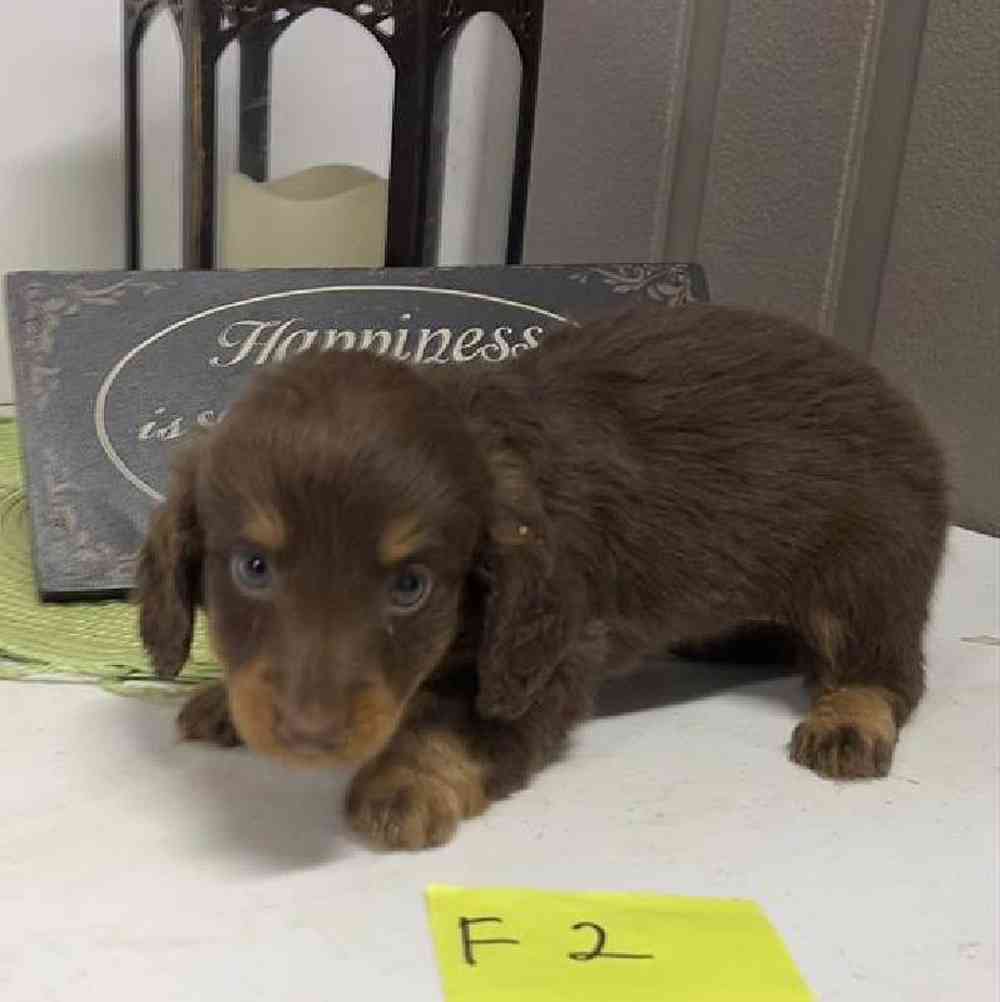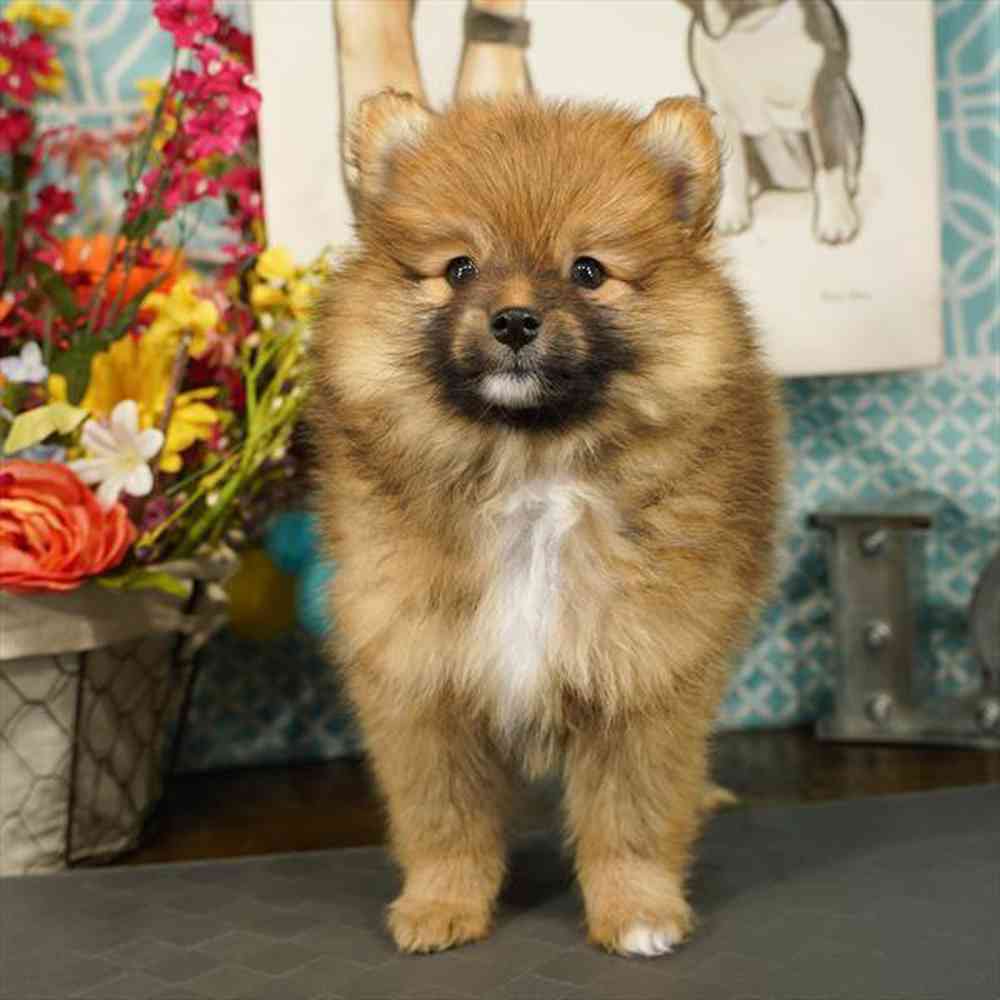

AKC Registrable
Family Dog
Beagle
Not only is the Beagle an excellent hunting dog and loyal companion, it is also happy-go-lucky, funny, and—thanks to its pleading expression—cute. They were bred to hunt in packs, so they enjoy company and are generally easygoing.
Available Pups
Puppy Knowledge
Breed Info
Group
Hound
Heritage
One of most popular breeds in the United States, the Beagle originated sometime in the 1500’s to hunt rabbits, hare and other small game. Today’s Beagle was developed in 1830’s England from the Talbot Hounds, the Southern Hound, the Harrier and the North Country Beagle. With an extremely keen scenting ability, the Beagle is an excellent search & rescue and narcotics detection working dog.
Health Awareness
The Beagle has a life expectancy of 12-15 years and is prone to epilepsy, hypothyroidism, heart disease, back issues and eye problems.
Exercise/Energy Level
Beagles are high-energy dogs and need plenty of daily exercise including brisk daily walks, aerobic running, and dog day care (when available). Keep your Beagle in a yard with at least a 6’ fence; Beagles have been known to climb fences. When walking, keep your Beagle on a leash. Once they pick up the scent of something interesting, Beagles take off on the hunt.
Additional Information
Grooming Requirements: Requires occasional brushing and regular bathing. Coat: Medium, smooth, hard Shedding: Average shedding. Hypoallergenic: No, due to shedding Apartment Living: Not good for apartment living due to the "baying" vocalizing they make. Lap Dog: No Good With Children: Good with all children when socialized at an early age. Good With Other Pets: Generally good with dogs; not trustworthy with other non-canine pets due to hunting instinct unless socialized well at an early age.
Clubs, Registries & Associations
American Canine Association Continental Kennel Club Universal Kennel Club International American Kennel Club United All Breed Registry America's Pet Registry, Inc. United Kennel Club (Based on breed recognition. See store for details on this particular puppy.)
Breed Standard
Size, Proportion, Substance
There shall be two varieties: Thirteen Inch--which shall be for hounds not exceeding 13 inches in height. Fifteen Inch--which shall be for hounds over 13 but not exceeding 15 inches in height.
Head
The skull should be fairly long, slightly domed at occiput, with cranium broad and full. Ears--Ears set on moderately low, long, reaching when drawn out nearly, if not quite, to the end of the nose; fine in texture, fairly broad-with almost entire absence of erectile power-setting close to the head, with the forward edge slightly inturning to the cheek--rounded at tip. Eyes--Eyes large, set well apart-soft and houndlike--expression gentle and pleading; of a brown or hazel color. Muzzle--Muzzle of medium length-straight and square--cut--the stop moderately defined. Jaws--Level. Lips free from flews; nostrils large and open. Defects--A very flat skull, narrow across the top; excess of dome, eyes small, sharp and terrierlike, or prominent and protruding; muzzle long, snipy or cut away decidedly below the eyes, or very short. Roman-nosed, or upturned, giving a dish-face expression. Ears short, set on high or with a tendency to rise above the point of origin.
Neck, Topline, Body
Neck and Throat--Neck rising free and light from the shoulders strong in substance yet not loaded, of medium length. The throat clean and free from folds of skin; a slight wrinkle below the angle of the jaw, however, may be allowable. Defects--A thick, short, cloddy neck carried on a line with the top of the shoulders. Throat showing dewlap and folds of skin to a degree termed "throatiness." Shoulders and Chest Shoulders sloping--clean, muscular, not heavy or loaded--conveying the idea of freedom of action with activity and strength. Chest deep and broad, but not broad enough to interfere with the free play of the shoulders. Defects--Straight, upright shoulders. Chest disproportionately wide or with lack of depth. Back, Loin and Ribs Back short, muscular and strong. Loin broad and slightly arched, and the ribs well sprung, giving abundance of lung room. Defects--Very long or swayed or roached back. Flat, narrow loin. Flat ribs.
Forequarters
Forelegs--Straight, with plenty of bone in proportion to size of the hound. Pasterns short and straight. Feet--Close, round and firm. Pad full and hard. Defects--Out at elbows. Knees knuckled over forward, or bent backward. Forelegs crooked or Dachshundlike. Feet long, open or spreading.
Hindquarters
Hips and thighs strong and well muscled, giving abundance of propelling power. Stifles strong and well let down. Hocks firm, symmetrical and moderately bent. Feet close and firm. Defects--Cowhocks, or straight hocks. Lack of muscle and propelling power. Open feet.
Coat
A close, hard, hound coat of medium length. Defects--A short, thin coat, or of a soft quality.
Color
Any true hound color.
Tail
Set moderately high; carried gaily, but not turned forward over the back; with slight curve; short as compared with size of the hound; with brush. Defects-A long tail. Teapot curve or inclined forward from the root. Rat tail with absence of brush.
Disqualifications
Any hound measuring more than 15 inches shall be disqualified.
Overview
Temperament
Friendly, Curious, Merry
About
There are two Beagle varieties: those standing under 13 inches at the shoulder, and those between 13 and 15 inches. Both varieties are sturdy, solid, and “big for their inches,” as dog folks say. They come in such pleasing colors as lemon, red and white, and tricolor. The Beagle’s fortune is in his adorable face, with its big brown or hazel eyes set off by long, houndy ears set low on a broad head. A breed described as “merry” by its fanciers, Beagles are loving and lovable, happy, and companionable—all qualities that make them excellent family dogs. No wonder that for years the Beagle has been the most popular hound dog among American pet owners. These are curious, clever, and energetic hounds who require plenty of playtime.
History
The origins of this ancient breed have been the subject of conjecture for centuries. Even the breed name is a shrouded in mystery. Some experts say it derives from the Gaelic word beag (“little”), while others point to the French term for the sound hounds make while hunting: be’geule. There are reports of small pack-hounds employed to hunt rabbit and hare in England long before the Roman legions arrived in 55 B.C. An English authority called the Beagle the “foothound of our country, indigenous to the soil.” By the 1500s, most English gentlemen had packs of large hounds that tracked deer, and smaller hounds that tracked hares. The smaller, more compact hounds were ancestors of our modern Beagle. The phrase “foot hound” is vital to understanding the Beagle’s broad appeal for hunters in England, the Continent, and North America. Unlike larger pack hunters like foxhounds or Harriers, the Beagle could be hunted on foot—no horse was necessary. Those who couldn’t afford to feed and stable a mount, and ladies and gentlemen too old spend a hard day thundering across the countryside on horseback, could easily keep up with a pack of Beagles on foot. Beagles imports began arriving in America in the years after the Civil War, and their popularity among U.S. rabbit hunters was immediate. The AKC registered its first Beagle, named Blunder, in 1885. To this day, “beaglers” in woodsy areas of North America still swear by their breed’s great nose, musical voice, and enthusiastic approach to rabbit hunting.
Standard
A miniature Foxhound, solid and big for his inches, with the wear-and-tear look of the hound that can last in the chase and follow his quarry to the death.
Nutrition
The Beagle should do well on a high-quality dog food, whether commercially manufactured or home-prepared with your veterinarian’s supervision and approval. Any diet should be appropriate to the dog’s age (puppy, adult, or senior). Some dogs are prone to getting overweight, so watch your dog’s calorie consumption and weight level. Treats can be an important aid in training, but giving too many can cause obesity. Learn about which human foods are safe for dogs, and which are not. Check with your vet if you have any concerns about your dog’s weight or diet. Clean, fresh water should be available at all times.
Grooming
The Beagle has a smooth, dense double coat that gets heavier in the winter, so spring is shedding season. Beagles also shed moderately year-round. Weekly brushing with a medium-bristle brush, a rubber grooming mitt or tool, or a hound glove will remove the loose hair, and promotes new hair growth as well. Beagles don’t need to be bathed too often, unless they happen to get into something particularly messy. As with all breeds, the Beagle’s nails should be trimmed regularly, because overly long nails can cause the dog pain as well as problems walking and running.
Exercise
Beagles are active, energetic dogs who need at least an hour of exercise every day. This doesn’t mean just letting them out in the backyard. Beagles were bred to work in packs and are happiest when they have company. A Beagle who is left alone inside or outside for long periods of time will tend to become destructive. This can be avoided if he has a companion (whether human or canine) to play with. Beagles are escape artists, so an exercise area must have a fence at least five feet tall that extends underground to prevent tunneling. Walks must always be taken on a leash, because as a scenthound with a very strong hunting instinct, a Beagle will not be able to resist the urge to run off in pursuit of a compelling scent.
Training
As with all dogs, early socialization and puppy training classes are a must. Treats are a huge aid in training. Beagles do not respond well to harsh techniques, but patience, positive reinforcement and even a little creativity will win out in the end.
Health
Responsible breeders will screen their breeding stock for health conditions such as hip dysplasia, hypothyroidism, epilepsy, luxating patella (a dislocated kneecap), and eye disorders. As with all breeds, a Beagle’s ears should be checked weekly, and the teeth should be brushed regularly.
Trivia
Did you know?
The Beagle name may have originated from several different terms: "be'geule" (French) meaning "gape throat" because of this breed's baying vocalizing, or "beigh" (French), "begele (Old English), or "beag" (Celtic) all meaning "small." President Lyndon Baines Johnson was a fan of and had several Beagles Beagles are famous comic strip characters: Snoopy ("the world's most famous Beagle"), Odie from Garfield, Beegle Beagle from Grape Ape, and Walk Disney's Beagle Boys.






